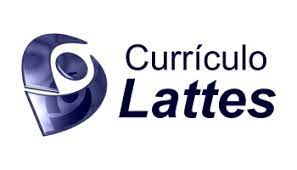Sinonasal inverted papilloma simulating estesioneuroblastoma
a case report
DOI:
https://doi.org/10.47456/rbps.v26isupl_3.09Keywords:
Inverted papilloma, Olfactory neuroblastoma, Computed tomography, Magnetic resonance imagingAbstract
Introduction: Nasal cavities, paranasal sinuses and skull base tumors are rare and usually aggressive lesions. The clinic is generally nonspecific and insidious, tending to lead these patients to a poor prognosis. In diagnosis and surgical planning, biopsy and imaging tests are imperative. In this context, since biopsy and imaging exams become imperative in its diagnosis and surgical planning, we describe a case report where an inverted papilloma (IP) mimicked an esthesioneuroblastoma (olfactory neuroblastoma) (ENB) in radiological images, aiming to contribute to the differential diagnosis of these two conditions. Case report: A 69-year-old woman complained of nasal obstruction, frontal headache and left-sided proptosis with the rhinoscopy revealing an expansive lesion in the ipsilateral nasal fossa. Computed tomography (CT) and magnetic resonance imaging (MRI) reviewed a solidocystic dumbbell lesion involving the anterior and left nasal fossae, centered on the cribriform plate and associated with intracranial peripheral cysts, a classic ENB findings. The patient underwent left frontoethmoidectomy with excision of the nasal tumor, but the biopsy, however, revealed an IP. Conclusion: We present a case report of a PI in which imaging on CT and MRI simulated an ENB, likely representing an atypical manifestation of a rare disease. It is hoped that, in light of the above, this work will aid in the differential diagnosis of both conditions.
Downloads
References
1. Sung H, Ferlay J, Siegel RL, Laversanne M, Soerjomataram I, Jemal A, Bray F. Global Cancer Statistics 2020: GLOBOCAN Estimates of Incidence and Mortality Worldwide for 36 Cancers in 185 Countries. CA Cancer J Clin. 2021 May;71(3):209-49.
2. Chow LQM. Head and Neck Cancer. N Engl J Med. 2020 Jan 2;382(1):60-72.
3. Dutta R, Dubal PM, Svider PF, Liu JK, Baredes S, Eloy JA. Sinonasal malignancies: A population-based analysis of site-specific incidence and survival. Laryngoscope. 2015 Nov;125(11):2491-7.
4. Thawani R, Kim MS, Arastu A, Feng Z, West MT, Taflin NF, et al. The contemporary management of cancers of the sinonasal tract in adults. CA Cancer J Clin. 2023 Jan;73(1):72-112.
5. Lisan Q, Laccourreye O, Bonfils P. Sinonasal inverted papilloma: From diagnosis to treatment. Eur Ann Otorhinolaryngol Head Neck Dis. 2016 Nov;133(5):337-41.
6. Pitak-Arnnop P, Bertolini J, Dhanuthai K, Hendricks J, Hemprich A, Pausch NC. Intracranial extension of Schneiderian inverted papilloma: a case report and literature review. Ger Med Sci. 2012;10.
7. Cohn EM. Neuroradiology, 3rd Edition, The Requisites. Neuroophthalmology. 2011 Jan 16;35(1):55.
8. Upadhya IB, Rao K. Sinonasal Inverted Papilloma: A Narrative Review. Indian J Otolaryngol Head Neck Surg. 2022 Oct;74(Suppl 2):1017-22.
9. Fiani B, Quadri SA, Cathel A, Farooqui M, Ramachandran A, Siddiqi I, et al. Esthesioneuroblastoma: A Comprehensive Review of Diagnosis, Management, and Current Treatment Options. World Neurosurg. 2019 Jun;126:194-211.
10. Dublin AB, Bobinski M. Imaging Characteristics of Olfactory Neuroblastoma (Esthesioneuroblastoma). J Neurol Surg B Skull Base. 2016 Feb;77(1):1-5.
11. Wu K, Avila SA, Bhuyan R, Matloob A, Del Signore AG, Hadjipanayis C, et al. Orbital invasion by Esthesioneuroblastoma: a comparative case series and review of literature. Orbit. 2022 Feb;41(1):1-14.
12. Pasquini E, Sciarretta V, Compadretti GC, Cantaroni C. A case report of inverted papilloma associated with esthesioneuroblastoma treated by endoscopic sinus surgery. Am J Otolaryngol. 2003 May-Jun;24(3):181-2.
13. Karam SD, Jay AK, Anyanwu C, Steehler MK, Davidson B, Debrito P, et al. Pathologic Collision of Inverted Papilloma with Esthesioneuroblastoma. Front Oncol. 2014 Mar 14;4:1-6.
Downloads
Published
How to Cite
Issue
Section
License
Copyright (c) 2025 Brazilian Journal of Health Research

This work is licensed under a Creative Commons Attribution-NonCommercial-NoDerivatives 4.0 International License.
Authors and reviewers must disclose any financial, professional, or personal conflicts of interest that could influence the results or interpretations of the work. This information will be treated confidentially and disclosed only as necessary to ensure transparency and impartiality in the publication process.
Copyright
RBPS adheres to the CC-BY-NC 4.0 license, meaning authors retain copyright of their work submitted to the journal.
- Originality Declaration: Authors must declare that their submission is original, has not been previously published, and is not under review elsewhere.
- Publication Rights: Upon submission, authors grant RBPS the exclusive right of first publication, subject to peer review.
- Additional Agreements: Authors may enter into non-exclusive agreements for the distribution of the RBPS-published version (e.g., in institutional repositories or as book chapters), provided the original authorship and publication by RBPS are acknowledged.
Authors are encouraged to share their work online (e.g., institutional repositories or personal websites) after initial publication in RBPS, with appropriate citation of authorship and original publication.
Under the CC-BY-NC 4.0 license, readers have the rights to:
- Share: Copy and redistribute the material in any medium or format.
- Adapt: Remix, transform, and build upon the material.
These rights cannot be revoked, provided the following terms are met:
- Attribution: Proper credit must be given, a link to the license provided, and any changes clearly indicated.
- Non-Commercial: The material cannot be used for commercial purposes.
- No Additional Restrictions: No legal or technological measures may be applied to restrict others from doing anything the license permits.

























